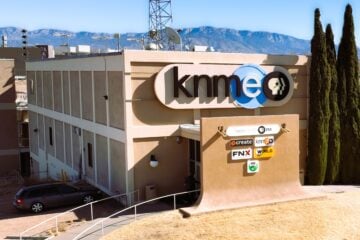Why public media must rethink assumptions shaped by CPB funding

by-studio / iStock
This commentary was first published on the author’s LinkedIn page and is republished here with permission.
Public media has existed in two distinct eras, and we’re entering the third. The first was prior to the creation of CPB in 1967, when public media was a scrappy ecosystem of noncommercial radio and television stations without much of an audience or national profile. The second era was marked by the nationalization of the service after the passage of the Public Broadcasting Act and the founding of PBS and NPR.
Public media existed before federal funding, and it will continue to exist in this third, evolving era. But it will be different. Losing federal funding is a huge immediate challenge but may not be the biggest one.
Adapting to a rapid shift in audience behavior is the existential challenge. Audiences are shifting from traditional linear broadcast consumption to on-demand and mobile. Broadcasting no longer conveys a geographic monopoly on the distribution of content. It’s becoming clear that a business model based largely on the broadcast distribution of national programming leased from PBS and NPR is declining.
There still is life left in public media’s legacy distribution business, but it will not last forever. A pivot to unique local services is the opportunity. I shared some thoughts on this in an earlier piece. Here are some more thoughts on the way forward for public media at this critical time.
Redefining universal service/access. The Public Broadcasting Act of 1967 created the concept of (and funding for) universal service. Public broadcasting is nearly ubiquitous in terms of broadcast coverage, reaching about 99% of the U.S. population. Maintaining that kind of broadcast coverage will be difficult without government subsidies. And it may not be necessary for much longer as the dominance of broadcasting continues to erode.
Broadcast distribution ensured that public media content was freely available. That commitment should endure as a general principle, as it is an important differentiator of our service. Public media content should continue to be generally free even as the cost of distribution (e.g., mobile and broadband) gets shifted to consumers, which seems inevitable.
Rethinking the real and imagined constraints of government funding. For decades, CPB funding was the most stable and predictable source of support for many local public media organizations. Protecting it was the lens through which many strategic decisions were made. That strategic lens is shattered.
Without dismissing the significance of the loss of federal funding (it’s big), there is now a necessity to change the mindset. Indecision and timidity need to give way to bolder and quicker actions. Public media leaders will need to be more open to ideas that might have been discarded in the past due to fears about the impact on government funding.
Broadening the boundaries of the public media ecosystem. The Public Broadcasting Act defined public media solely as FCC-licensed noncommercial radio and television stations. Funding flowed only to this exclusive club through separate radio and television grant programs. That made sense for decades while broadcasting reigned supreme.
Today, an array of public interest media organizations is pursuing similar aims but without legacy broadcasting licenses. Broadening the definition of the ecosystem to include them could unlock opportunities for expanded public service at the local level. There are already models for this, with numerous public media organizations having absorbed other news organizations.
More public service, fewer managements. The historic drive toward universal broadcast reach for public media created redundancies and inefficiencies. For more than a decade, CPB provided funding for local public media organizations to better collaborate and even merge. But relatively few have moved in that direction. The cost of operating hundreds of autonomous public television and radio organizations is high and likely not sustainable.
There are instances where stand-alone governance and management are necessary, such as for tribal and minority-service stations. But in most cases, greater community presence (such as reporters on the ground) and fewer managements need to be the new norm.
The need for new ways to address common challenges going forward. CPB played a unique role in the public media ecosystem beyond Community Service Grants. It initiated and funded critical needs of the ecosystem like interconnection, music rights negotiations and common tech applications (such as the Grove content management system).
These common needs will remain, and new ones will emerge after CPB closes its doors. NPR and PBS will try to fill the vacuum created, but this may not best serve the needs and interests of the ecosystem. The driving force of both organizations is national content, so serving other needs of the ecosystem has always been secondary. Each has strategies to directly serve audiences, solicit donations and elevate their own brands, which makes it difficult (if not impossible) to center the needs of local public media organizations.
I believe the best approach is to create a new organization with the sole function of serving the shared needs of the public media ecosystem. This could include designing and operating interconnection systems (and making them more cost-efficient), negotiating music rights, and licensing/creating tech for public media. This organization should be chartered and governed in a way that holds it accountable to members of the ecosystem, putting their needs first. This would better serve the ecosystem while freeing up PBS and NPR to focus on what they do best.
Navigating the amount of change right now is a huge challenge. Each individual organization must evolve, and so must the long list of organizations that support and serve the ecosystem (NPR, PBS, PRX, America’s Public Television Stations, Station Resource Group, Public Television Major Market Group, the National Educational Telecommunications Association, Greater Public, American Public Media, etc.). It’s a time to courageously question long-held assumptions and create new ways to achieve public media’s public service mission. Millions are counting on us to figure this out.
Steve Bass served as president and CEO of Oregon Public Broadcasting from 2006 to 2024. He began his public media career at WHA in Madison, Wis., and spent a decade at PBS, seven years at GBH in Boston and seven years at Nashville Public Television. He also served on the boards of NPR, PRX and the Station Resource Group, and chaired the boards of Greater Public and America’s Public Television Stations.






As usual you are spot-on Steve. We should not waste a good crisis, as the saying goes, and look at this time as an opportunity to break the mold and do new, innovative-and in some cases overdue-things.
Bingo! He shoots, he scores! Yahtzee!
100% on all of this. The model across the pond of course is the Beeb, BBC. But that won’t happen in the Balkanized world of public media, and the utter dysfunction of congress. The “back end” model that Steve proposes is probably the only one that can succeed. Individual boards of directors, and managers have proven their unwillingness, or inability to merge, co-manage, or collaborate on a large scale. That said, they *might* now agree that a large scale solution is the only way forward. Keep pressing on this Steve, it’s very good work!
As usual, wise and provocative ideas from Steve Bass. Current’s six-year project “Local that Works,” which launched in 2016 and ended in 2022, began with the proposition that the future of public media is/was local. Given the political and financial climate, that future now must include merged backend solutions and in some cases complete mergers and acquisitions.
I propose that the largest stations consider adopting small ones in the mode of “Sister Cities.” This wouldn’t be a direct redistribution of wealth but a sign that even though local is king, the sustainability of small, rural and tribal stations is in the public interest and in the interest of maintaining “the system.” Everyone benefits from these partnerships.
Loss of federal funds will also necessitate greater collaboration with other local media, both nonprofit and for-profit. Competition is a model that no longer serves audiences. Collaboration presents a decent chance for public media to strengthen local service, survive and thrive.
Both proposals center localism. It wouldn’t be a big stretch for supersized stations to help the little guys with fundraising, HR, IT, engineering, accounting, and/or legal, etc. Indeed, I think it is somewhat of a moral imperative. CDP, Public Media Company, NETA Business Center can also be helpful providing services on a sliding scale with support from members of PTMMG and SRG.
Finally, I want to respond to this sentence in your essay: “Public media leaders will need to be more open to ideas that might have been discarded in the past due to fears about the impact on government funding.” This includes an unshakeable commitment to DEI from PBS and NPR and local community stations. University stations are in a different position since many millions in federal and state grants are on the line. There’s a real threat that these stations will sell their signals to Christian and other radio, so those stations don’t really have a choice but to cave the new world order.
PBS’ “let go” its top-notch DEI officers and yanked a high school/college curriculum on LGBT rights. CPB also wavered and dumped verboten words from Trump’s listed of banned word such as diversity, equity and inclusion. These moves were an attempt to “follow [orders] from President Trump.” How did that go?
It’s time for some introspection and an embrace of public media’s basic values since a rerun to the good old days of federal funding for the current service is highly unlikely.
Good idea. Sort of a “Bell Labs” for the system. I would like to add to the wishlist a robust noncommercial streaming platform that brings together the best of StreamGuys, TuneIn, Live365 and YouTube so that programming can originate anywhere and be enjoyed anywhere.
Yes, Steve, there is savings to be had in mergers. I spent my last years as a consultant to stations interested in mergers and CPB lessened any perceived pain with financial support for those who chose to merge. I was met with cooperation by GMs for the most part. Boards saw the potential but sometimes their personal interests got in the way of full support. The personal interests were not only their position on the resulting board but very personal business interests in the status quo. And sometimes it was simply an in-place GM who wanted to determine who among his/her staff would be the successor regardless of who would be best for the job when it was one organization. Mergers are still a very untapped source of savings, made possible mostly by technology as shown with the single Master Control operations.